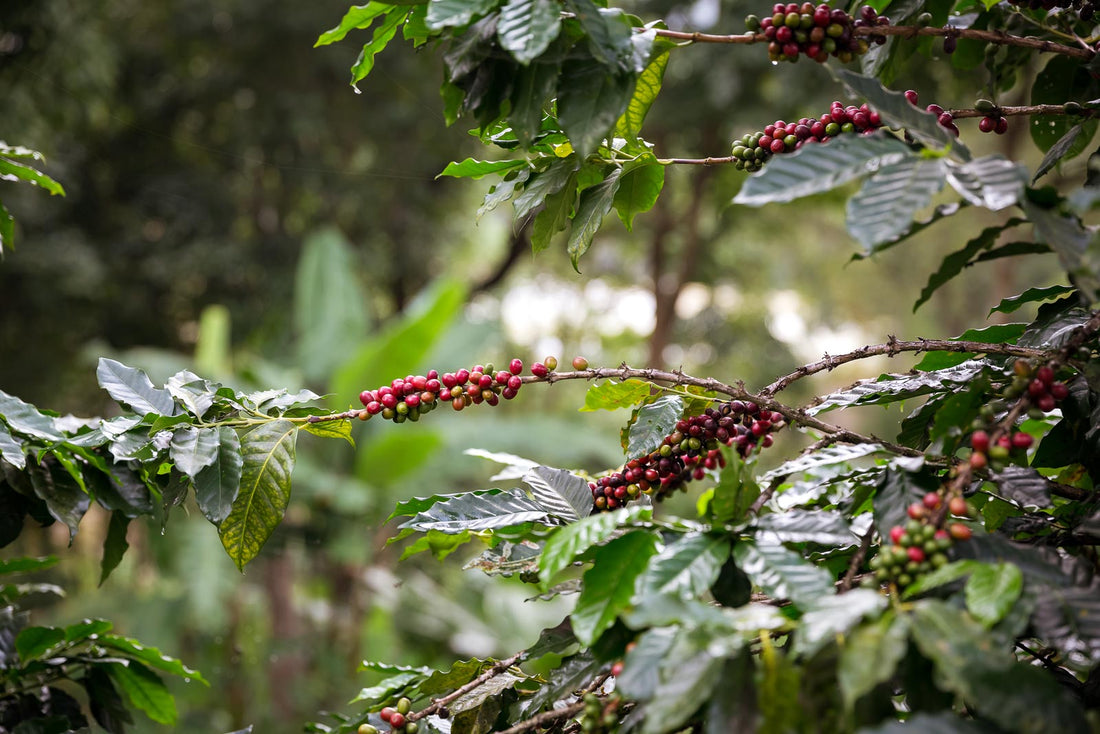
Plants 101
How to Reuse Coffee Grounds to Fertilize Houseplants
Did you know you can recycle your used coffee grounds into fertilizer for your plants? Learn more about reusing this common kitchen waste item in your plant care routine.

If you’re a coffee drinker or share your space with one, you’re most likely familiar with coffee grounds. But did you know you can reuse this common kitchen waste item?
Are Coffee Grounds Good for Plants?
Coffee grounds contain several key nutrients needed by plants, including nitrogen, potassium, magnesium, calcium, and other trace minerals. These are all nutrients that plants need to grow. The grounds are particularly rich in nitrogen, making them a great addition to compost. Additionally, coffee grounds can help to improve the structure and water-retaining abilities of the soil. However, there are some caveats.
Ready to recycle yours? Follow along for our tips and tricks on how to give your coffee grounds a second life.
How to Use Coffee Grounds for Plant Care

1. Opt for used coffee grounds, instead of fresh.
There are two types of grounds to consider for use with your plants: fresh coffee grounds or used coffee grounds. Fresh grounds are ground-up coffee beans that haven’t been used to brew coffee yet, while used coffee grounds are what’s left over after your coffee has been made.
When considering using coffee grounds to fertilize your houseplants, we recommend sticking with used coffee grounds. This is because fresh grounds can be high in acidity and caffeine, which can have a negative impact on your houseplants. There are a select few plants that can benefit from fresh grounds—including acidity-loving Hydrangeas, Rhododendrons, Gardenias, Azaleas, Lily of the Valley, blueberries, carrots, and radishes—but generally, most common houseplants will prefer low to no acidity.
2. Add used coffee grounds to your compost.
There is a lot of conflicting information online on how to repurpose used coffee grounds into fertilizer. The most accepted method, which we also recommend as the best for your plants, is adding the used grounds to your compost.
To get started, add the used coffee grounds to your compost pile, which usually consists of vegetable peels, fruit skins, and other types of natural waste. When your compost is ready, mix a small amount of it with potting soil and distribute among your plants.
Depending on what was in your compost mix, be cautious of how much compost you use. Excessive amounts of compost or coffee grounds can lead to foliage burn and nutrient toxicity. Just like with store-bought fertilizer, a little goes a long way. Compost is filled with rich, organic matter and naturally retains water, so not only will you want to be mindful of how much you mix in your potting soil, but you will also want to be mindful of how often you water your plant potted in it. If you are keen on adding compost to your potting soil for the nutrients, consider also adding coarse sand or perlite to the potting mix to help decrease the risk of overwatering.
3. Or create a liquid fertilizer with used coffee grounds.
If you do not compost at home, you can create a liquid fertilizer with your used coffee grounds instead. The key to using used coffee grounds as a liquid fertilizer is dilution! Too much of a good thing is possible, particularly for plants potted in containers. We recommend using about a teaspoon of coffee grounds per gallon of water.
Let the coffee grounds and water mixture steep for a few nights, stirring occasionally, then strain the liquid through a cheesecloth. The remaining liquid can be used to water, and gently fertilize, your houseplants.

4. If you sprinkle used grounds on top of soil, do so sparingly.
Another way to recycle leftover used coffee grounds is sprinkling them on top of your potting soil. If you plan to test out this method, do so sparingly. Avoid creating a thick layer. Used (and fresh) grounds can lock together and create a barrier to water penetration and air circulation.
5. Don’t forget other nutrients your plants might need.
Reusing used coffee grounds is a fun, free way to fertilizer your houseplants, however, it most likely will not provide your plants with all the nutrients they need. You can add additional nutrients by using a premade houseplant fertilizer or repotting your plant with fresh potting mix.
6. Recycle used coffee grounds in other ways.
You may want to test fertilizing plants with and without used coffee grounds. If you aren’t getting the results you hoped for, skip the grounds. Instead, you can recycle used coffee grounds to create a natural cleaning scrub or skin exfoliator.

Conclusion
Using used coffee grounds for plants can enrich the soil with nutrients like nitrogen, improve soil structure, and aid in water retention when done in moderation and for plants that thrive in slightly acidic conditions. It’s important to compost the grounds first or mix them with other soil amendments to avoid potential issues like mold growth or excessive acidity. Always monitor your plants' response to ensure they are thriving with this addition!

Words By The Sill
Empowering all people to be plant people—a collection of articles from The Sill's team of plant experts across a variety of plant care topics to inspire confidence in the next generation of plant parents. Welcome to Plant Parenthood™.
Do Some Plant Shopping